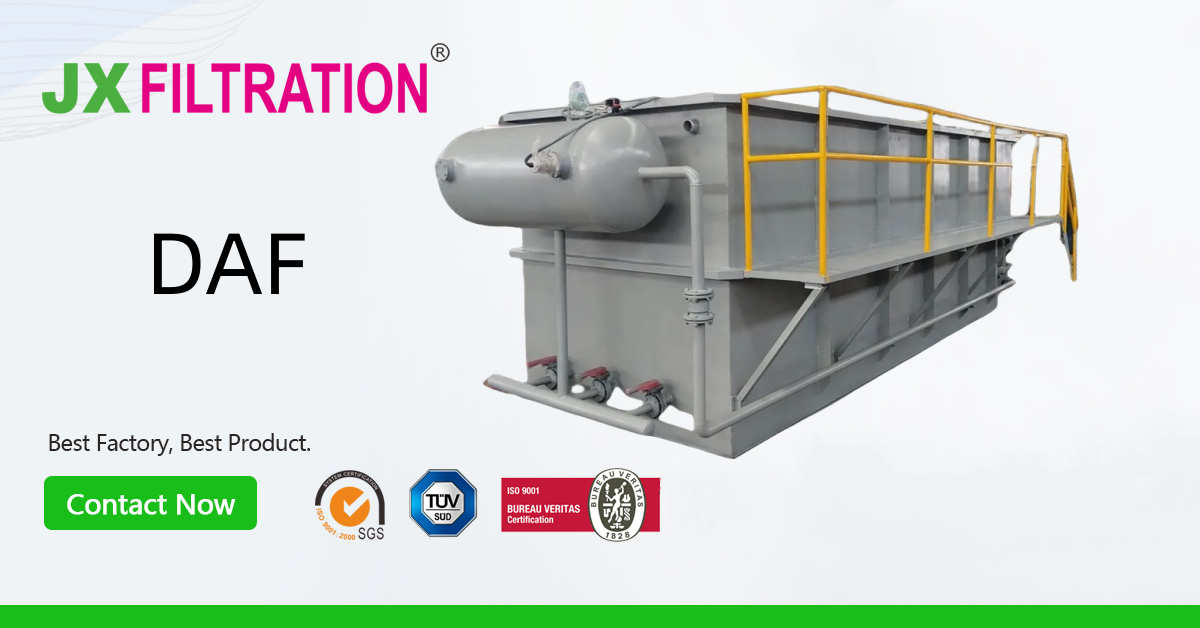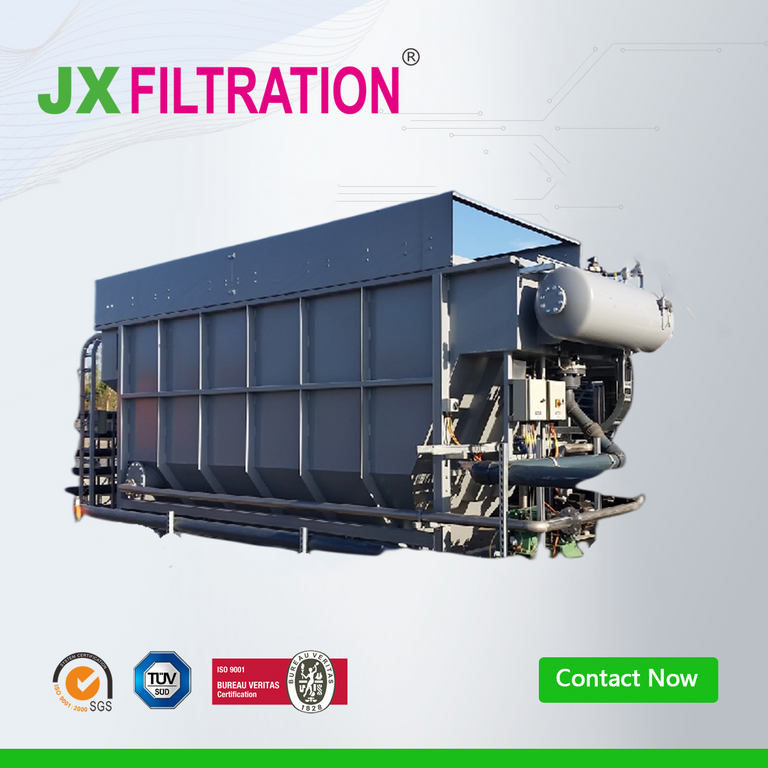Factors Affecting the Poor Performance of Dissolved Air Flotation (DAF)
Dissolved Air Flotation (DAF) is a water purification process where air or other gases are introduced into wastewater to generate bubbles. These bubbles facilitate the attachment of fine suspended particles or solid particles, allowing them to adhere to the bubbles and float to the water surface for removal. Several key factors influence the effectiveness of DAF, and their careful consideration is crucial for optimal water treatment results.

1. Impact of Coagulation Pretreatment on DAF Performance:
Effective coagulation is paramount for the success of the DAF process. The coagulation pretreatment effectiveness is controlled by parameters such as the size of floc particles, mixing intensity, and reaction time.
-
Requirement for Particle Size in DAF: DAF, like sedimentation, requires larger floc particles, often in the range of several hundred micrometers or even larger. When the sizes of microbubbles and floc particles are similar, their adhesion efficiency is maximized. Microbubbles used in DAF typically have diameters between 10 to 100 micrometers, aligning well with the desired floc particle size in the range of several tens of micrometers to 100 micrometers.
-
Impact of Mixing Intensity (G Value): DAF eliminates the need for large-sized floc particles throughout the process. Therefore, increasing the reaction mixing intensity (raising the G value) has been experimentally validated as beneficial. Optimal G values depend on the type of coagulant, with values around 70 s^-1 for FeCl3, 70-80 s^-1 for aluminum salts, and G values exceeding 30 s^-1 for polyaluminum chloride (PAC). Maintaining G values in the range of 10-50 s^-1 has proven effective for particle removal in DAF, offering enhanced removal efficiency, particularly for smaller particles (<50 micrometers).
-
Effect of Reaction Time: Historically, both sedimentation and DAF processes used the same reaction time of approximately 45 minutes in Europe. However, recent studies suggest that DAF processes can be effective with shorter reaction times, often requiring only 15-20 minutes. Some water treatment plants employ a two-stage coagulation process with a reaction time of 20 minutes per stage.
2. Influence of Chemical Additives on DAF Performance:
In DAF, chemical additives are introduced to modify the surface properties of hydrophobic or hydrophilic substances, ensuring better adhesion between particles and bubbles.
-
Coagulants: Inorganic and organic coagulants play a crucial role in facilitating the agglomeration of fine particles into larger flocs, increasing their buoyancy and aiding in their removal. Coagulants also alter the hydrophobicity of suspended particles.
-
Flotation Agents: Substances like petroleum, pine oil, fatty acid salts, and surfactants act as flotation agents. They are often composed of combinations of polar and non-polar molecules. Adsorption of these agents on the surface of hydrophilic suspended particles results in a transformation of their properties, making them hydrophobic and facilitating adhesion to microbubbles.
-
Coagulant Aids: Coagulant aids, such as polyacrylamide, enhance the water-tightness of particle surfaces, increasing their floatability.
-
Inhibitors: Inhibitors, such as sodium sulfide and lime, suppress the natural buoyancy of certain substances and do not interfere with the removal of target impurities.
-
pH Adjusters: Adjusting the pH of wastewater using acids or bases helps regulate the dispersion of microbubbles and their adhesion capabilities. Various acids and alkalis serve as pH adjusters.
3. Impact of Microbubble Characteristics on DAF Performance:
The successful operation of DAF relies heavily on the generation of numerous microbubbles, and their characteristics significantly influence the efficiency of the process.
-
Microbubble Size: Contrary to the belief that smaller microbubbles are better, numerous studies indicate that an optimal size is required. Factors such as the need for increased energy input, potential for excessive microbubble usage, and the risk of increased resistance in downstream filtration systems argue against extremely small microbubbles. Typically, microbubbles with diameters around 10-100 micrometers align well with the requirements of DAF.
-
Surface Characteristics of Microbubbles: Microbubbles generally have a negative charge, around -100mV, due to the adsorption of certain negatively charged ions. This characteristic influences their interaction with suspended particles. The surface charge and hydrophobicity of both microbubbles and particles determine their adhesion efficiency.
In conclusion, the performance of DAF is intricately tied to factors such as coagulation pretreatment, chemical additive characteristics, and microbubble properties. Achieving optimal conditions in each of these aspects is crucial for enhancing the efficiency of DAF in water treatment processes.
Any Requirements, Contact Us Now!
Kris
Email/Teams: kris@filtrationchina.com
Mobile/Whatsapp/Wechat: +86 18980776200


